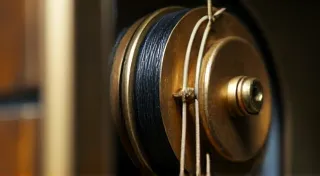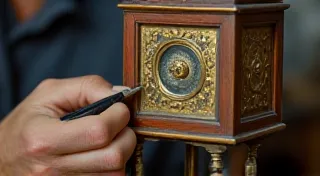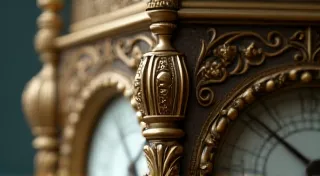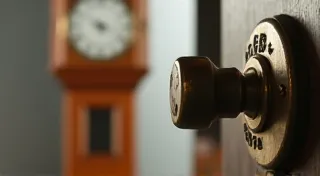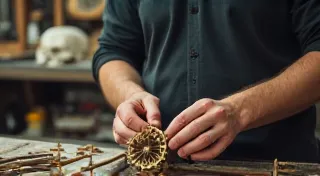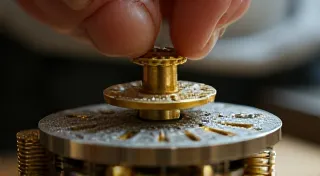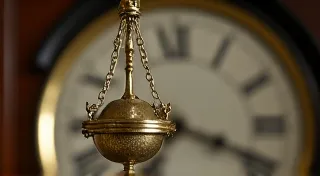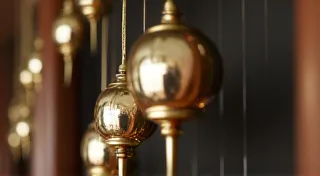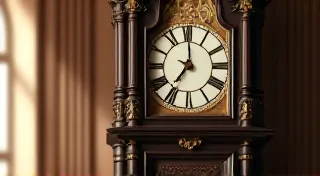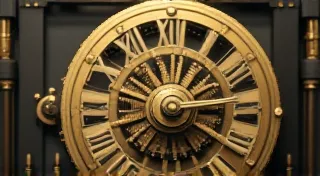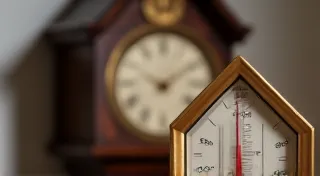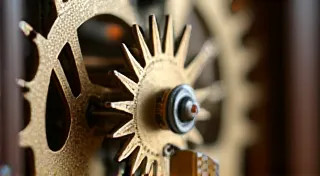Antique Clock Repair Guides: Restore Your Timepiece to Glory
Welcome to the definitive resource for antique clocks, vintage clocks, and their intricate mechanisms. Whether you're a seasoned horologist or a curious beginner, our detailed guides and tutorials will equip you with the knowledge and skills to diagnose, repair, and restore your cherished timepieces. This site goes beyond simple fixes; we delve into the history, artistry, and preservation of these fascinating objects, ensuring their legacy continues for generations.
Preserving History: Why Repair, Not Replace
Antique clocks aren't merely timekeeping devices; they are tangible links to the past, embodying craftsmanship, artistry, and a bygone era. Replacing a beautifully crafted antique clock with a modern one is a profound loss – silencing a piece of history, discarding a connection to the past. Our focus here isn't solely about fixing broken parts; it's about preserving these legacies, safeguarding these pieces of our collective heritage. With the right knowledge, you can breathe new life into a silent grandfather clock, a delicate mantle clock, or any other treasured antique.
The value of an antique clock extends far beyond its ability to tell time. It represents the ingenuity of past inventors, the skill of the craftsman, and the aesthetic sensibilities of a different era. Understanding this value fosters a deeper appreciation for the restoration process and encourages a commitment to preserving authenticity. We believe that retaining as much of the original clock as possible is paramount. While some parts might need replacement due to irreparable damage, our guides prioritize techniques that minimize alterations and maintain the clock’s character. This approach ensures the clock remains a faithful representation of its original design and era.
From simple clock maintenance to complex restorations, this website provides the resources you need. We understand that restoring an antique clock can seem daunting, but by breaking down the process into manageable steps, we aim to empower you to tackle these projects with confidence. We emphasize the importance of careful documentation throughout the restoration process – photographing each stage, noting any modifications, and keeping a detailed record of the work performed. This documentation not only aids in the restoration itself but also provides valuable information for future owners or restorers.
Common Clock Problems and How to Tackle Them: A Practical Overview
Many antique clock issues stem from age, environmental factors, and occasionally, previous (sometimes less-than-ideal) repairs. Let’s explore some frequent problems and how our guides can help you overcome them. Remember to always proceed with caution and consult multiple sources before attempting any repairs.
- Stopped Clocks: A frustratingly common issue! Our Troubleshooting a Stopped Antique Grandfather Clock guide dives into the common causes – from simple pendulum issues to more complex mechanical failures – and provides practical solutions to get it ticking again. This includes checking for obstructions, ensuring proper lubrication, and diagnosing potential gear problems.
- Rust & Corrosion: Moisture and neglect can lead to unsightly rust and corrosion, which can compromise the clock’s functionality. Our Dealing with Rust on Antique Clock Movements: Removal & Prevention guide provides essential techniques for removing rust gently and effectively, using appropriate solvents and abrasives, and protecting your clock from further damage with preventative measures like humidity control.
- Speed Issues (Running Fast or Slow): Does your clock consistently run fast or slow? The Troubleshooting a Clock That Runs Fast or Slow: Calibration Tips guide offers simple steps to calibrate your clock – adjusting the pendulum length, regulating the beat, and diagnosing potential escapement problems – ensuring accurate timekeeping.
- Cable Issues (Weight-Driven Clocks): Weight-driven clocks often require cable replacements due to stretching or breakage. Our Replacing Clock Cables: A Detailed Guide for Weight-Driven Clocks offers a thorough walkthrough of this process, emphasizing the importance of selecting the correct cable length and tension.
- Broken Clock Hands: Fragile and easily damaged, clock hands require careful repair. Explore our Repairing Broken Clock Hands: From Bending to Soldering Techniques for expert advice on bending, soldering, and replacing broken hands, ensuring proper balance and alignment.
- Damaged Cases: Cracked or chipped cases detract from the clock’s beauty and can also compromise its structural integrity. The Identifying and Repairing Cracked Clock Cases: Restoration Methods guide details how to address these issues using appropriate adhesives, fillers, and finishing techniques. Proper cleaning is also key; check out our guide on Cleaning & Polishing Antique Clock Cases: Preserving the Original Finish for essential tips on safely removing old finishes and restoring the original luster.
- Finial & Ornamentation Care: These delicate features often need special attention. Our guide on Cleaning and Preserving Delicate Clock Finials and Ornamentation provides specific care techniques, including safe cleaning methods and repair strategies for damaged ornamentation.
- Escapement Problems: A malfunctioning escapement will stop the clock or cause erratic timekeeping. This advanced repair requires a deep understanding of the clock's mechanism.
Understanding the Inner Workings: Movement Identification and Repair - A Deeper Dive
Beyond just fixing visible issues, a true understanding of the clock's mechanism is crucial. Knowing what type of movement you have informs your repair approach. Different movements require different tools, techniques, and levels of expertise.
- Clock Movement Identification: Our Identifying Different Types of Antique Clock Movements: A Visual Guide provides a comprehensive visual reference to help you identify your clock’s movement type – from verge escapements to lever escapements – and understand its unique characteristics.
- Disassembly and Reassembly: Feeling brave? Our A Beginner’s Guide to Dismantling and Reassembling an Antique Clock Movement offers a gentle introduction to this complex process (proceed with caution!). Careful documentation is essential.
- Escapement Adjustment: The escapement is a critical component. Our The Importance of Humidity Control for Antique Clocks guide provides essential insights. Understanding its function and adjusting its beat requires patience and precision.
- Gear Repair and Replacement: Many antique clocks suffer from worn or broken gears. This guide will help you identify problems and potentially repair or replace them.
- Spring Replacement and Repair: Replacing the mainspring or other springs requires specialized tools and techniques due to their potential for stored energy.
- Lubrication Techniques: Proper lubrication is vital for smooth operation and prevents premature wear.
Beyond Repair: Preservation and Historical Context - A Cultural Appreciation
Restoring an antique clock isn’t just about mechanics; it’s about appreciating its history. Understanding the context in which it was made enhances the restoration experience and informs your approach to preserving its authenticity.
- American Clock Movement History: Dive into the fascinating evolution of American clockmaking with our The History & Evolution of Antique American Clock Movements article, exploring the key inventors, innovations, and design trends that shaped the industry.
- Humidity Control: Environmental factors significantly impact antique clocks. Our The Importance of Humidity Control for Antique Clocks guide provides essential insights into the impact of humidity and temperature on clock mechanisms and provides practical strategies for maintaining a stable environment.
- Dial Identification: Recognizing the age and origin of a clock's dial face – considering the font, numerals, and decorative elements – can be surprisingly informative. Check out our Identifying and Matching Antique Clock Dial Faces for details.
- Case Style Analysis: Understanding the architectural style of the clock case can provide clues to its age and origin.
- Understanding Markings and Signatures: Identifying manufacturer marks and signatures can often pinpoint the clock's origin and age.
Join Our Community: Continuing the Legacy
We hope these guides empower you to keep your antique clocks ticking for generations to come. Remember, patience and careful observation are your best tools. We also strongly recommend consulting with experienced clockmakers for complex repairs. Check back often, as we're constantly adding new content and refining existing guides. If you have a unique repair challenge or a burning question, feel free to reach out – we're passionate about helping preserve these beautiful pieces of history! Share your restoration stories and tips with us - your experience can benefit others. Good luck with your antique clock restoration projects!
